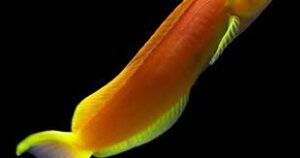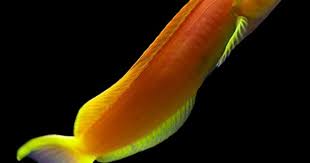The Influence of Dragons in Eastern Cultures

Dragons are some of the most powerful, revered, and iconic mythological creatures across various cultures. In Eastern cultures, particularly in China, Japan, Korea, and Vietnam, dragons have a profound influence that shapes not only folklore and traditions but also national identities and cultural values. These creatures, often seen as symbols of power, wisdom, and protection, embody elements of both cosmic and earthly power, thus playing a central role in shaping many aspects of life in Eastern societies.
In this article, we will explore the impact of dragons in Eastern cultures, examining their mythological significance, symbolic meanings, and how they have influenced various aspects of life, from art and literature to ceremonial practices and national identity.
1. The Dragon in Chinese Culture: A Symbol of Imperial Power and Harmony
In Chinese culture, the dragon is one of the most prominent and enduring symbols, representing a mixture of heavenly and earthly power. Known as the Long (龙), Chinese dragons are often depicted as long, serpentine creatures with the ability to control water, rain, winds, and floods, linking them to nature’s power. These creatures are also considered benevolent beings, bringing prosperity and good fortune to the Chinese people.
1.1. The Role of the Dragon in Chinese History
The dragon’s influence extends back thousands of years in Chinese history. According to legend, the dragon is a divine creature that has the ability to control the natural world. The Yellow Emperor (黄帝, Huángdì), one of the legendary founders of Chinese civilization, is said to have been guided by a dragon in his victory over enemies, cementing the creature’s link to imperial power.
In the imperial system, the dragon represented royalty and authority. The emperor, often referred to as the Son of Heaven, was considered the earthly representative of the dragon, with his rule symbolizing a harmonious connection between the heavens and earth. The emperor’s attire, including robes adorned with dragon patterns, signified his divine status.
1.2. The Dragon in Chinese Festivals
The dragon also plays a significant role in Chinese festivals, especially the Chinese New Year and the Dragon Boat Festival. The dragon dance, performed during the New Year celebrations, is a vibrant spectacle in which performers carry a large dragon figure on poles, believed to bring good luck, prosperity, and protection to the people. The Dragon Boat Festival is another celebration tied to dragons, with boat races featuring dragon-shaped boats that symbolize the efforts to drive away evil spirits and ensure a bountiful harvest.
The dragon’s symbolic power is evident in the way it is woven into the fabric of Chinese cultural practices, serving as a symbol of prosperity, spiritual protection, and cosmic order.
2. The Japanese Dragon: A Complex Figure of Water, Wisdom, and Guardianship
In Japan, dragons are also powerful mythological creatures, though their role and symbolism are distinct from their Chinese counterparts. Known as Ryū (竜) in Japanese, dragons are often associated with water, storms, and fertility. They are viewed as wise and benevolent creatures, capable of bringing blessings to those who honor them.
2.1. The Dragon in Japanese Folklore
In Japanese mythology, dragons are typically associated with water deities. Many are believed to reside in rivers, lakes, and seas, where they control water sources and maintain balance in the natural world. One of the most famous dragons in Japanese lore is Ryujin, the dragon god of the sea. Ryujin is often depicted as a giant, serpentine dragon who governs the ocean’s currents and is revered as a protector of fishermen, sailors, and coastal communities.
2.2. The Dragon in Japanese Art and Architecture
The dragon’s influence is also prominent in Japanese art and architecture. In traditional paintings, woodblock prints, and temples, dragons are depicted as guardians of the sacred. They are believed to bring protection and are often seen in shinto shrines and Buddhist temples. The dragon’s graceful, serpentine form, combined with its ability to command the natural world, symbolizes the connection between the human realm and the divine.
Moreover, dragons in Japanese folklore and art are often associated with rain, which is a critical element for Japan’s agricultural economy. Ryujin, for instance, is believed to summon rain when the land is in need, making him a central figure in the agricultural cycle.
3. The Korean Dragon: A Protector of the Land and Its People
In Korea, dragons, known as Yong (용), also hold significant importance. Korean dragons are similar to those in China and Japan in that they are benevolent and auspicious creatures, but they are also strongly tied to local protection and the safeguarding of lands and people. They are typically depicted with long, flowing bodies and are often seen as guardians of mountains, rivers, and temples.
3.1. The Symbolism of the Korean Dragon
The dragon in Korean culture is not only a symbol of royalty and imperial power but also one of national protection. In Korean folklore, dragons are believed to guard the territory and people, ensuring that the kingdom remains free from external harm. For instance, the Korean dragon is often depicted as watching over the royal family, protecting the land from invaders and natural disasters.
Additionally, dragons in Korea are linked to fertility and the harvest, with the belief that they can control the rain and regulate the agricultural seasons. As a result, Korean dragons are often associated with good fortune and the well-being of the people.
3.2. The Dragon’s Role in Korean Art and Culture
In traditional Korean art and architecture, the dragon is a prominent symbol of power and protection. Like their Chinese counterparts, Korean dragons can be seen in royal palaces, temples, and historical monuments. They often serve as guardians of these sacred spaces, offering divine protection to those who reside within.
The dragon’s image can also be found in Korean literature, where it represents strength, wisdom, and the connection between the earthly and divine realms. These representations have helped reinforce the cultural belief that the dragon is a protector of both the land and the people.
4. The Vietnamese Dragon: A Symbol of National Identity and Unity
In Vietnam, dragons also play a crucial role in the country’s mythology, but their influence extends deeply into the formation of Vietnamese identity and the unity of the nation. The Vietnamese dragon is known as Rồng, and it is closely tied to the legend of the Lạc Việt people and the founding of the Vietnamese nation.
4.1. The Legend of the Dragon and the Fairy
According to one of Vietnam’s most famous creation myths, the Dragon and the Fairy are believed to be the ancestors of the Vietnamese people. In the myth, the dragon marries the fairy, and together, they give birth to 100 children, who then spread across the land, forming the Vietnamese people. This legend, known as the Lạc Long Quân and Âu Cơ, has become an essential part of Vietnam’s national identity, with the dragon symbolizing the unity of the people and the fertility of the land.
4.2. The Dragon in Vietnamese Culture
The Vietnamese dragon is a symbol of both imperial power and fertility, much like in China and Korea. It is commonly seen in temples, palaces, and national festivals, where it represents protection, strength, and the continuity of the nation. The dragon is also a central figure in the Tết Nguyên Đán (Lunar New Year) celebrations, where it is believed to bring good fortune and drive away evil spirits.
The image of the dragon in Vietnam is one of national pride, and it continues to be used in modern times as a symbol of unity and resilience.
5. Conclusion: The Enduring Legacy of Dragons in Eastern Cultures
The dragon is a creature that transcends geographical and cultural boundaries in Eastern societies. Whether in China, Japan, Korea, or Vietnam, dragons are revered as powerful symbols of strength, protection, and wisdom. From their origins in ancient mythology to their place in modern national identities, the dragon has played a central role in shaping cultural narratives, spiritual beliefs, and artistic expressions across the Eastern world.
The influence of the dragon in Eastern cultures continues to thrive, proving that these mythological beings are not just relics of the past, but living symbols that remain integral to the cultural fabric of these societies. The dragon’s enduring presence is a testament to its power, relevance, and significance in Eastern history and cultural consciousness.
